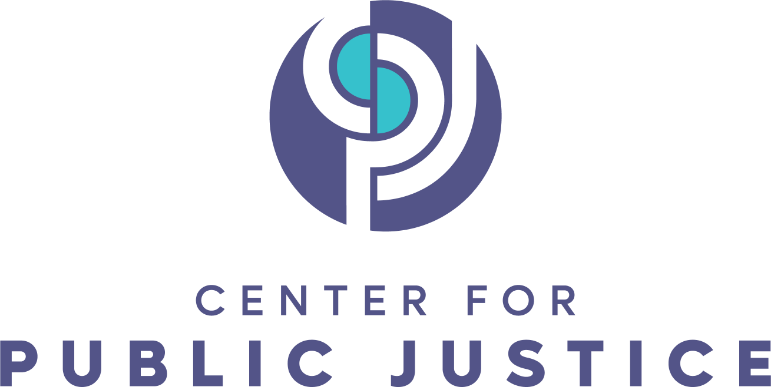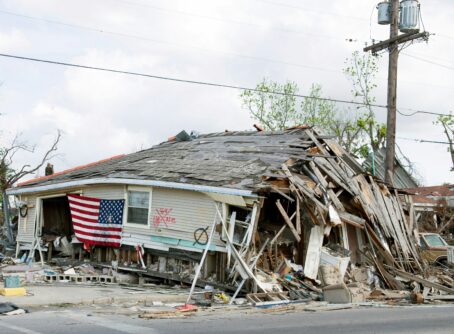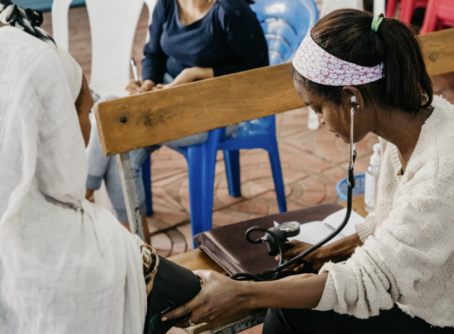
The story of Kaleif Browder — a 16-year-old who was arrested over a petty theft, abused while incarcerated, and once released committed suicide — is a tragedy that should convict anyone seeking to understand the impact of incarceration on children. What happened with Kaleif’s story is an indictment of our government for its failure to help the most vulnerable in society. Former Vice President Hubert Humphrey was once quoted as saying, “The moral test of government is how that government treats those who are in the dawn of life, the children; those who are in the twilight of life, the elderly; those who are in the shadows of life, the sick, the needy and the handicapped.” According to this test, the U.S, would be failing, particularly where it concerns our treatment of justice-involved youth.
The United States not only boasts a high number of children in adult prisons but current laws also make it easier for kids to be tried as adults. The Bureau of Justice Statistics records that as of 2021, there were 2,250 youth held in adult jails and prisons.
Furthermore, there are massive racial disparities that exist in the breakdown of which children are incarcerated. Additionally concerning is the fact that the Southern Poverty Law Center reports that the percentage of youth tried as adults actually increased between 2019 and 2020. Incarceration is applied in discriminatory and racist ways as our legal system locks away some of our children at higher rates than other children. The Annie E. Casey Foundation reveals that black youth are 16 times as likely to be in custody as AAPI youth, 4 times as likely as white youth, and 3 times as likely as Hispanic youth.
The current grim reality facing youth in the criminal justice system has been shaped by shifting public policy on this issue. While the U.S. used to have a system built around “community-based programs, diversion, and deinstitutionalization,” the system became more punitive in the 1980s as the public reacted to rising crime rates. In addition, there was a decrease in mental health services for youth, often leading to youth with mental health challenges being rerouted to jails and prisons rather than behavioral health services. Since the 1990s, almost every state passed laws making it easier for children to be tried as adults in the legal system despite developing neuroscience and research on adolescent cognitive development.
Why is it important for youth to be treated differently?
It is essential that youth are treated differently from adults in the criminal justice system for three simple reasons. Firstly, children exhibit clear and distinct developmental differences from adults.
Understanding the developmental differences between children and adults is crucial to creating effective public policy surrounding the treatment of children in our justice system. The Sentencing Project asserts that the human brain does not fully mature until age 25. For adolescents, this means that their brains haven’t fully matured in brain regions related to “impulse control, planning ahead, and risk avoidance.” This impulsivity may make children more susceptible to committing crimes and other irrational decisions. The Supreme Court has also recognized this difference, affirming that children are “less mature biologically, more vulnerable and susceptible to negative pressures and influences, and therefore less culpable.” Unfortunately, because youth are still in the process of psychologically maturing, it is doubly concerning that studies show that incarcerated children develop psychosocial maturity at far slower rates than comparable peers who remain at home. Sentencing a child to prison doesn’t take into account their immaturity and further stunts their development.
Understanding the developmental differences between children and adults is crucial to creating effective public policy surrounding the treatment of children in our justice system.
Secondly, incarcerating children, particularly in adult facilities, is dangerous and harms their physical and mental health. Putting children in jails and prisons also makes them vulnerable to sexual and physical violence. These harms are exacerbated when a child is incarcerated in an adult facility. The Sentencing Project reports that youth incarcerated in adult facilities are at the highest risk for sexual abuse. Children detained in adult facilities demonstrate higher rates of depression, fear, and post-traumatic stress disorder than children in youth facilities. In addition, the Equal Justice Initiative reveals the harrowing statistic that children are 36 times more likely to commit suicide in an adult jail than in a juvenile facility. These harms are distributed unequally, as The New York Times reports that Black children are 8.6 times as likely to be incarcerated in an adult facility than their white peers. It is also important to recognize that the harm done to youth behind bars does not stay within the walls of prisons, it ripples out into surrounding communities.
Thirdly, incarceration does not address youth criminal behavior as effectively as diversion programs or community support. The research repeatedly shows that incarceration and punitive consequences do not deter crime or recidivism for youth. A study of youth under age 18 who were incarcerated in adult facilities found that these youth were significantly more likely to commit a violent crime after their release. It seems that carceral facilities are themselves criminogenic, that is they produce rather than prevent criminal activity. The Annie E. Casey Foundation concludes that the more contact a youth has with the justice system, the higher their risk of negative outcomes. This is often because incarceration removes children from their communities and slows educational milestones.
If incarceration does not effectively address criminal behavior in youth, what does? Research shows that once youth age out of adolescence, their criminal behavior declines significantly. In addition, diversion opportunities that keep youth connected to their support systems do reduce recidivism, even for youth who committed serious offenses. In one diversion program in San Francisco, participating youth had half the recidivism rate as youth who had been incarcerated. The New York Times reports that youth “are more likely to succeed on a personal level if they receive comprehensive services that support positive youth development.”
What does justice require?
Given the severe harm facing children caught in our country’s criminal justice system, how might we change things so that those in ‘the dawn of life’ might not have their bright future dimmed by incarceration? Considering how government might play a role is essential because many of the harms in our legal system must be addressed through policy. First, we must understand the proper role of government. CPJ’s Guideline on Government puts it simply: “The government … bears the responsibility to legislate, enforce, and adjudicate public laws for the safety, welfare, and public order of everyone within its jurisdiction.” A healthy government seeks to maintain order in a society, while investing in and cultivating society.
Considering how government might play a role is essential because many of the harms in our legal system must be addressed through policy.
Although punitive measures are often seen as the best way to maintain order in society, the dangers facing youth incarcerated in adult and juvenile facilities, the scientific realities about their ability to change and grow, and the high recidivism rates of youth exiting carceral facilities are evidence that the role of government in creating public policies that nurture and cultivate children in their communities may be more effective at achieving community safety and restoring these youth to their communities.
In addition, God’s command repeated throughout scripture (and highlighted in Zechariah 7:9-10) is to care for the widow, orphan, immigrant, and poor is a key text for how Christians understand what it means to love God and love people. We serve a God who cares for the vulnerable and marginalized, those forgotten and despised by society. This call is reaffirmed in the gospels as Jesus says, “I was in prison, and you came to visit me” (Matthew 25:36). When we care for the incarcerated, we care for Jesus.
Jesus also issues a serious warning that if we do not help those in prison, “whatever you did not do for one of the least of these, you did not do for me.” (Matthew 25:45). When we do not support policies that protect youth in prison from suffering and trauma, we are neglecting a core tenet of the ministry and mission Jesus established for his followers. We can care for those in prison by creating policies that better ensure their dignity and safety.
Our call to care for the marginalized and those in prison must lead us to reconsider current policies surrounding youth incarcerated in adult jails and prisons. We must create justice systems and institutions that do not dehumanize and degrade but restore people and communities to health and wholeness. Isaiah 58:12 paints an image of the role of God’s people as that of rebuilding ancient ruins, raising up the foundations, and being ‘repairers of the breach.’ In many ways, the call to address the flaws of our current justice system, and the children that fall through the cracks, is a call to be repairers of the breach. This work of repair will take all of us advocating for better government policies in addition to church and community involvement.
Governmental solutions
Government policy can seek to cultivate society and protect community safety by restricting who can be tried as an adult, investing in diversion options for youth who have been arrested, and reinvesting money from carceral facilities into alternate youth programming and mental health services.
First, states who have not already done so should raise the age of criminal liability. The sentencing project reports that if Georgia, Texas, and Wisconsin raised the age of criminal liability to 18, then 30,000-35,000 children a year would no longer be tried as adults. This would mean that tens of thousands of children are no longer at such a high-risk of sexual assault, suicide, mental health challenges, and recidivism.
In addition, the government should further invest in youth diversion programs, which are proven to have better outcomes than incarceration. The Annie E. Casey Foundation reports that Florida’s civil citation program has been remarkably successful. Instead of an arrest and criminal record, youth receive a citation similar to a traffic ticket, and if they complete community service or pay restitution it does not go on their criminal record. Data collection on this program revealed that after a citation, youth are 30% less likely to recidivate compared to youth who were arrested.
In addition to that legislative change, the government should further invest in diversion programs, which are proven to have better outcomes than incarceration. It would be a far better use of resources to invest as well. The Southern Poverty Law Center reported that if Florida moved all children from the adult criminal justice system to juvenile justice facilities, the state would save $3.6 million. This money could be invested in programs that are not harmful to children and more effective at achieving community safety.
Practicing Citizenship
One way that citizens can engage with this issue is by supporting movements for policy change. The Children’s Defense Fund is an example of a community organizing group that empowers faith communities to engage in policies and practices that care for the children in their communities. In New York, the CDF participated in the successful campaign for the Raise the Age Act. The Act raised the age of juvenile accountability in New York State, required parents to be notified of their adolescent’s arrest, processed youth in courts intended to meet their developmental needs, housed youth in settings that keep them safe, and expunged youth criminal records.
Additionally, there are many ways that churches can partner with organizations to better serve the kids who are in their direct communities. One example is Gateway Family Church, a Christian community that partnered with a juvenile diversion nonprofit by providing meeting places and administrative services. This nonprofit provided a pre-trial program for first-time offenders as a positive alternative to juvenile court. Pretrial programs are significant because they divert youth out of juvenile court allowing them to remain in their communities and avoid the trauma and negative physical and mental health effects that result from incarceration.
It is also essential that we think more critically in our communities about what really achieves community safety and switch our mindset from punitive systems to restorative, community-based models.
It is also essential that we think more critically in our communities about what really achieves community safety and switch our mindset from punitive systems to restorative, community-based models. Joshua Rovner, a senior advocacy associate at The Sentencing Project in Washington shares in an article, “There are people who think that the criminal justice system can solve problems that it isn’t able to. That you can just lock people up, but that doesn’t work.” Rovner started the Restore Justice Foundation in Chicago. This organization advocates for policy change, like opposing life-without-parole sentencing for juvenile offenders. They also engage with broader community work, through its support groups, Communities and Relatives of Illinois Incarcerated Citizens (CRIIC) and Returning Citizens Network (RCN). Civic organizations like these can empower citizens to be more engaged in crafting policies and systems that care well for their neighbors and support the children in their communities.
A Greater Imagination for Healing
As the current justice system stands, we put children behind bars just as their lives are dawning. By the time these children who have been charged as adults return home, it’s estimated that 95% of them are 25. With youth who commit crimes, we must have a greater imagination of what kinds of opportunities can restore them to the community and prevent future crime. We should design systems that do not cause further damage to these youth. Instead, we should advocate for policies and programs in our neighborhoods that help youth further their mental and emotional development. As Christians and citizens, we should desire more for the next generation and work to create policies and systems that empower, equip, and heal children so that they might achieve the full, bright potential of their futures.





